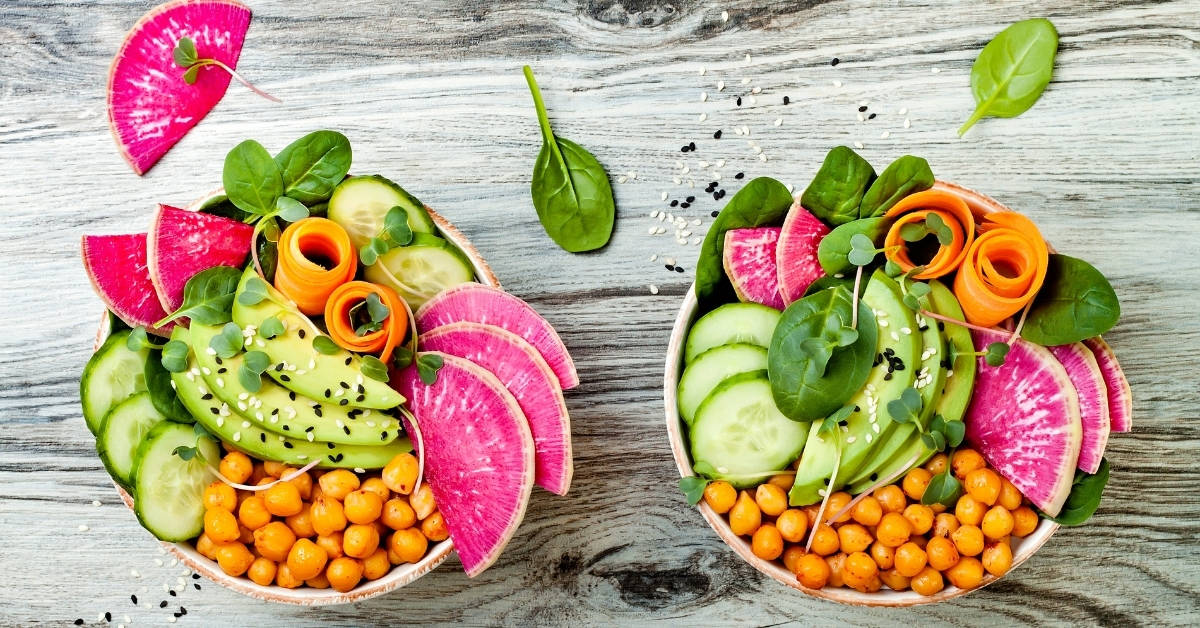Are you struggling to find the best healthiest microgreens to eat? Read the nutrition facts and growing aspects of these microgreens below!
Microgreens, a hot superfood trend in the health food world, can get pricey at the grocery store. Microgreens are vegetables that are harvested at the seedling stage, about a week or two after germination. All the nutrients that the plant would typically use to grow are concentrated in a tiny little package at this early stage.
Microgreens are more concentrated in both nutrients and flavor in comparison to their more mature counterparts. Studies indicate that some microgreens can have many times more of a given nutrient than the fully grown version. This is part of why people are willing to pay so much for them. But they don’t have to.
Growing the Healthiest Microgreens (to Eat) at Home
Microgreens can be grown at home for a fraction of the cost. In addition to saving money, you’ll have the benefit of maximum freshness and knowing exactly what went into the production of your microgreens. Here are some of the healthiest and best-tasting microgreens, as well as information on how to grow and use them.
1. Mustard
Mustard greens are a cool-weather crop that is enjoyed worldwide. They are a staple of Southern (talking about the U.S.) cooking, but they also have historical roots in India and China. It’s common to find them in Asia, Europe, India, North Africa, and North America.
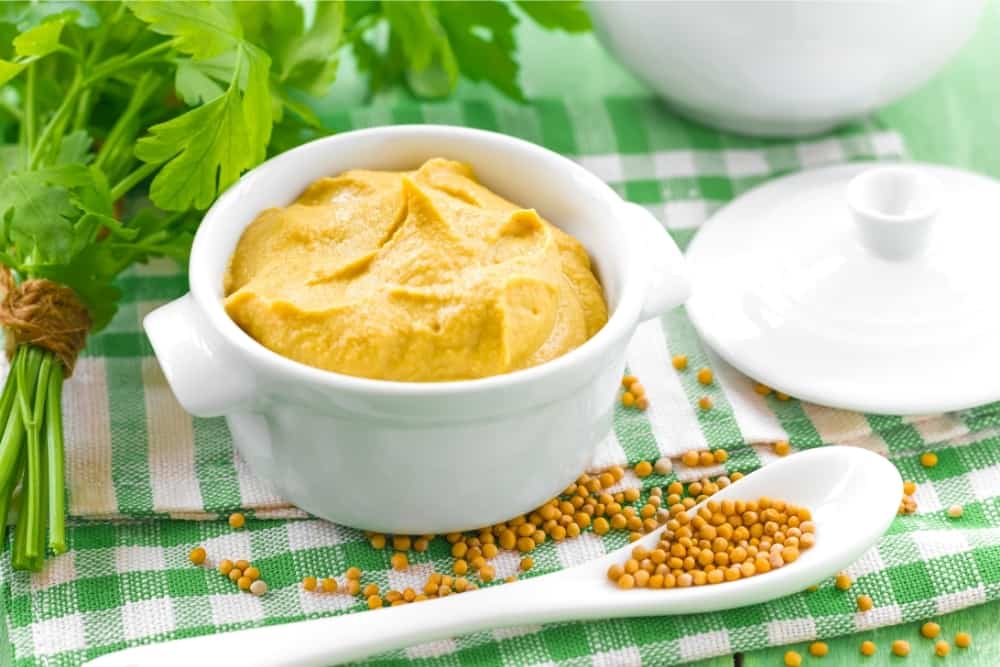
Mustard greens health benefits include:
- Lowers the risk of heart disease, obesity, and diabetes
- Relieves congestion
- Aids in the function of the immune system
- Anti-inflammatory
Flavor Profile
Mustard microgreens are described as intense, having a spicy, yet sweet flavor.
Nutrition
There are a few varieties available of mustard microgreens available. A USDA study of 25 available microgreens analyzing vitamins and carotenoids included both purple mustard and red mustard.
| Purple Mustard (per 25 g)/ % of Recommended Daily Intake | Red Mustard (per 25 g)/% of Recommended Daily Intake | |
| Vitamin C | 18.0mg / 45% | 15.5mg / 38% |
| Vitamin E | 4.7mg / 156% for women, 118% for men | 5.5mg / 184% for women, 137% for men |
| Vitamin K1 | 32.5μg / 27% | 47.5μg / 40% |
| Beta-Carotene | 1.4mg / 16% for women, 13% for men ** | 1.6mg /19% for women, 15% for men ** |
| Lutein/Zeaxanthin | 1.6mg / ** | 1.2mg / ** |
Best Applications
Mustard microgreens are best suited for raw applications; they are delicate, and the flavor and textures will not hold up when exposed to high temperatures. The same can be said for covering them with heavy dressings.
Mustard can be used best as:
- Accent for salads, best sprinkled on after the dressing is tossed, giving added texture and a kick of spice.
- As a compliment to savory dishes
- Garnish for sushi, sashimi, sandwiches, soups
- Pairs well with meats, fish, goat cheese, mozzarella
- Sprinkled in a smoothie
Growing
As mentioned before, mustards are a cool-weather crop, but cultivating them as a microgreen means they can be grown indoors, making them available year-round in just about any region.
- Choose your growing medium. If you choose to grow on soil, mustards grow best in soil with a pH range of 6.0 to 7.5.
- Mustard germinates between 50 and 75-degrees Fahrenheit, but 70-degrees is ideal.
- Mustard seeds should be germinated in the dark.
- Once the seeds have germinated, they should be moved to a well-lighted area.
Light and Water
Sunlight or room light will both work so long as your bulb imitates the light spectrum of sunlight. Room light will not dry out your medium as fast, and it will be easier to maintain an ideal temperature.
When watering, water gently from the side or use a misting spray bottle – these tiny plants are delicate and can be injured easily.
Harvesting
Cut the plants just above the medium. Mustard microgreens will degrade quickly; it is recommended they be eaten fresh rather than stored. If you do choose to store them, they keep best when dry to the touch.
If they are still damp, lay the microgreens between some paper towels and dry them gently. Transfer to a sealed container and place them in the refrigerator until ready to use.
(Source: sproutpeople.org; whfoods.com; herbsathome.co; specialtyproduce.com; university.upstartfarmers.com; indianexpress.com; microgreensworld.com; microveggy.com)
2. Pea
Peas are another cool-weather crop. Pea microgreens also referred to as pea tendrils, offer the following health benefits:
- Regulates blood sugars
- Anti-inflammatory
- Lowers risk of heart disease, obesity, and diabetes
- Improves vision and eye health
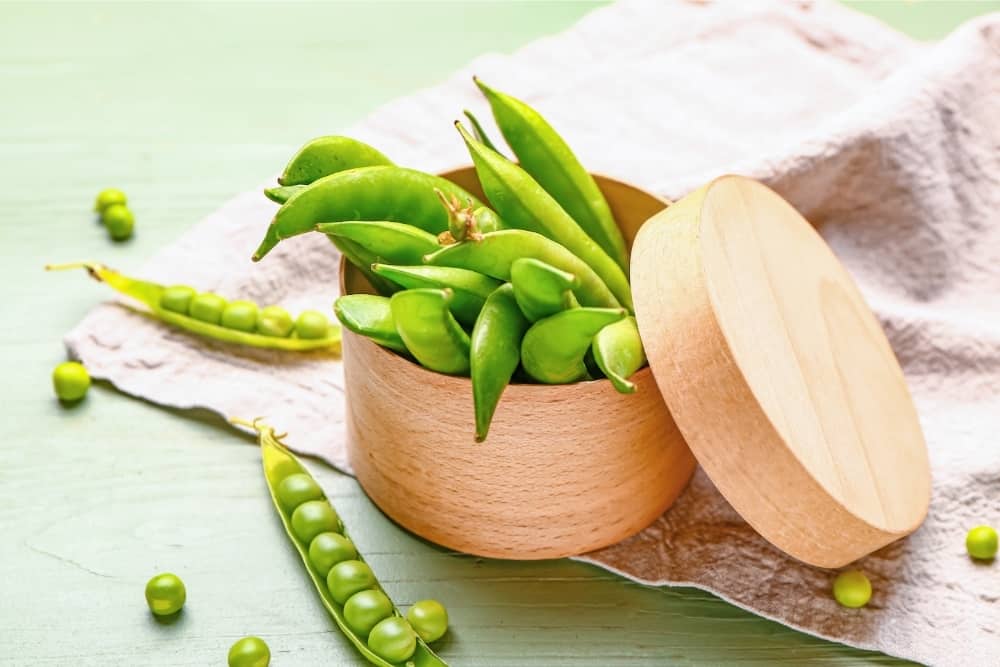
Flavor Profile
Pea microgreens are said to have a sweet flavor, similar to that of a snow pea pod, and a crunchy texture. They’ve also been described as tasting like the peas they are but in cress-like form.
There are a variety of peas available:
- Garden peas
- Snow peas
- Snap peas
Nutrition
| Pea Tendrils (per 25 g)/ % of Recommended Daily Intake | |
| Vitamin C | 12.6 mg / 32% |
| Vitamin E | 8.8 mg / 293% for women, 220% for men |
| Vitamin K1 | 77.5μg / 65% |
| Beta-Carotene | 2.1mg / 25% for women, 19% for men ** |
| Lutein/Zeaxanthin | 1.8 mg / ** |
Best Application
Pea tendrils can be eaten raw or cooked and are one of the healthiest microgreens to eat. Some applications for pea tendrils include:
- Can be eaten by themselves as a snack
- Added to stir-fry for an additional nutrition boost
- Added to a salad
- Layered on a sandwich
- Sprinkled in an omelet or smoothie
- Used as a garnish
Growing
While peas are a cold-weather crop, they can be grown as microgreens year-round.
- Before planting, pea seeds need to be soaked for 8 – 12 hours. This will soften the seed coat and encourage germination. It’s ok if you forget them, but don’t let them soak for more than 24 hours.
Keep in mind that pea seeds will swell during soaking. This will affect how many peas will be needed to cover your planting medium. Rinse the seeds before spreading on the planting medium.
- Soil pH. If you choose to grow your microgreens in soil, peas grow best in soil with a pH level of 5.8 to 7.0. Soak the growing medium before spreading your seeds.
- Temperature. Peas will germinate within a temperature range of 40 to 85-degrees Fahrenheit; the optimum temperature is 75-degrees Fahrenheit.
Light and Water
Pea seeds germinate best in the dark. Mist with a spray bottle twice a day while covered. Once the seeds have germinated, wait a few more days before moving them into the light. When the pea sprouts are just over an inch long, place them under lights.
Spray the soil with a spray bottle to settle it; the germination process will have pushed it up. Place the growing tray in another tray that will hold some water. This is called bottom watering. If the tray hasn’t soaked up all of the water in an hour, pour out the extra and allow the tray to dry.
Maintain the moisture level; peas use a lot of water.
Harvest
Harvest the pea tendrils when they are 3 to 5 inches long. If pea tendrils are damp to the touch, dry gently with a paper towel. They are best enjoyed fresh but can be stored in a refrigerator in a sealed container.
Unlike most microgreens, pea tendrils will continue to grow after they are harvested.
(Source: gardening.cornell.edu; peashellers.net; web.extension.illinois.edu; Blog.backtotheroots.com; practicalgrowing.com; bonappetit.com; homemicrogreens.com)
3. Amaranth
Amaranth is a warm-weather crop that is native to South America; it was domesticated there between 6,000 to 8,00 years ago, which is why it’s sometimes referred to as an “ancient grain.” Amaranth is a good source of complete protein.

Health benefits of amaranth include:
- Anti-inflammatory
- Aids digestion
- Aids in the function of the immune system
- Reduces risk of heart disease
- Helps metabolize fatty acids
- Improves vision and eye health
- Slows hair loss and greying
Flavor Profile
Amaranth microgreens are said to have a sweet, earthy taste that is reminiscent of mustard greens but without the spice. Amaranth microgreens have also been compared to spinach.
Nutrition
In the USDA study mentioned before, garnet amaranth was the variety used.
| Garnet Amaranth (per 25 g)/ % of Recommended Daily Intake | |
| Vitamin C | 32.9 mg / 82% |
| Vitamin E | 4.3 mg / 143% for women, 107% for men |
| Vitamin K1 | 102μg / 85% |
| Beta-Carotene | 2.2 mg / 26% for women, 20% for men ** |
| Lutein/Zeaxanthin | 2.1 mg / ** |
Best Application
Amaranth microgreens are best suited for raw applications; they are delicate, and the flavor and textures will not hold up when exposed to high temperatures. Also, they will lose nutritional value when cooked.
Amaranth is best left undressed and only added to the final stages of a dish. Recommended applications for amaranth:
- Complements both sweet and savory dishes
- Use to top salmon or pasta.
- Add to sandwiches, salads, or smoothies.
Growing
Amaranth is considered to be a more difficult microgreen to grow. It prefers warmer conditions but can be sensitive to too much direct light. Amaranth will need a deeper medium to grow in; it is best grown in soil or hydroponically. Amaranth microgreens can be grown year-round as long as the climate is controlled.
- Soil pH. If you choose soil as your medium, the optimum soil pH level for Amaranth is between 6.0 and 7.0.
- Spread the seeds over the top of the soil. Spread them to where you can still see a little soil between the seeds.
- Mist them lightly with a spray bottle and cover. Make sure the cover is ventilated to reduce the risk of mold growth.
- Once germinated, keep covered until they’re a half-inch tall. Once they’ve reached this height, transfer them to indirect light. Mist the plants daily or keep the growing media in a water tray. Amaranth will grow best between 70 and 85-degrees Fahrenheit.
Harvest
When it’s time to harvest, cut just about the growing media. This helps prevent your microgreens, amaranth, or any other, from needing to be washed. Microgreens are typically delicate and can easily be damaged by washing.
If the amaranth is damp to the touch, gently dry between two paper towels before enjoying or storing it in the refrigerator.
(Source: smartgardener.com; specialtyproduce.com; practicalgrowing.com; gardening.cornell.edu; veggieharvest.com; bootstrapfarmer.com)
4. Beets
Beets are a cool-weather crop that can be harvested for both its greens and its roots.
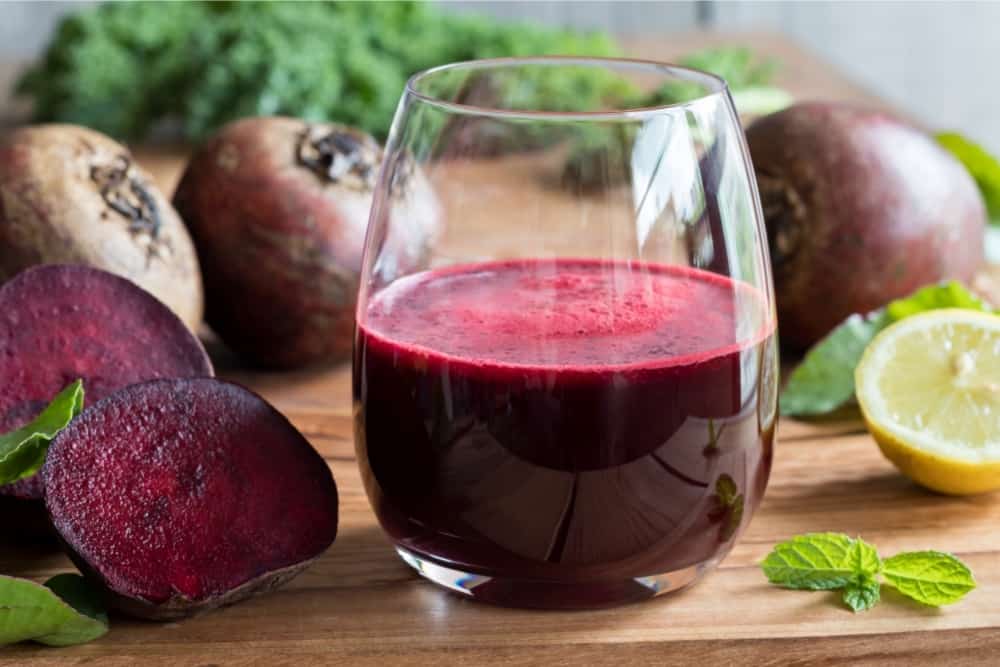
Health benefits of beets microgreens include:
- It helps the body remove dead skin cells and encourages new cell growth.
- Helps the liver secrete enzymes that remove toxins from the body
- Boosts cell regeneration
- May prevent hair loss.
Flavor Profile
Beet microgreens are described as tender, crunchy, and sweet with an earthy, nutty taste. Beet microgreens have also been said to have a hint of pepper.
Nutrition
In the USDA study, bull’s blood beets were the variety used.
| Bull’s Blood Beets (per 25 g)/ % of Recommended Daily Intake | |
| Vitamin C | 11.6 mg / 29% |
| Vitamin E | 4.6 mg / 153% for women, 115% for men |
| Vitamin K1 | 50 μg / 42% |
| Beta-Carotene | 1.3 mg / 15% for women, 12% for men ** |
| Lutein/Zeaxanthin | 1.1 mg / ** |
Best Application
Beet microgreens are one of the healthiest microgreens to eat and are best suited for raw applications; they are delicate, and the flavor and textures will not hold up when exposed to high temperatures. The same can be said for covering them with heavy dressings.
Some recommended applications for beet microgreens:
- Eat directly after harvesting as a snack.
- Add to salads, sandwiches, pizza, or smoothies.
- Garnish for dishes
Growing
Beet microgreens can be grown year-round in the comforts of one’s home.
- Soak. Beet seeds, like pea seeds, need to be soaked before planting. Some sources say this is unnecessary, but the consensus is that it will help speed up the germination process. Unlike peas, beet seeds only need to soak for about 4 to 8 hours (and no more than 12 hours).
- Provide drainage. Your growing tray must have drainage holes; beets do better with less water. They can be grown hydroponically, but they will grow better with soil as their medium as beets have an intricate root structure.
- Use nutrient-rich soil. A good idea to ensure nutrient availability is to use a mixture of 80% sterilized soil and 20% earthworm castings. Put a layer of soil in your tray about an inch deep without compacting it.
- Moisten. Spray the growing medium with water before spreading seeds evenly across the surface.
- Press the seeds into the tray. Seeds need to be either gently pressed into the soil or lightly covered with extra soil mixture.
- Cover the tray and leave for 4 to 5 days; there is no need to water during this period but keep an eye on the plants when they germinate.
- Remove the cover. When the seedlings begin to shed their hulls, remove the cover.
- Provide light and water. Now, move the plants into the light. Direct sunlight is not necessary. From this point on, either mist with a spray bottle of water from the bottom with a water tray under the growing medium.
When the leaves start opening, the microgreens are ready to harvest. As with the other microgreens: if they are damp to the touch, dry gently between two paper towels before storing in a sealed container in the refrigerator.
(Source: specialtyproduce.com; whfoods.com; gardening.yardener.com; localharvest.org)
5. Peppercress
Peppercress, also known as garden cress, is a cool-weather crop similar to watercress; both peppercress and watercress are members of the mustard family.
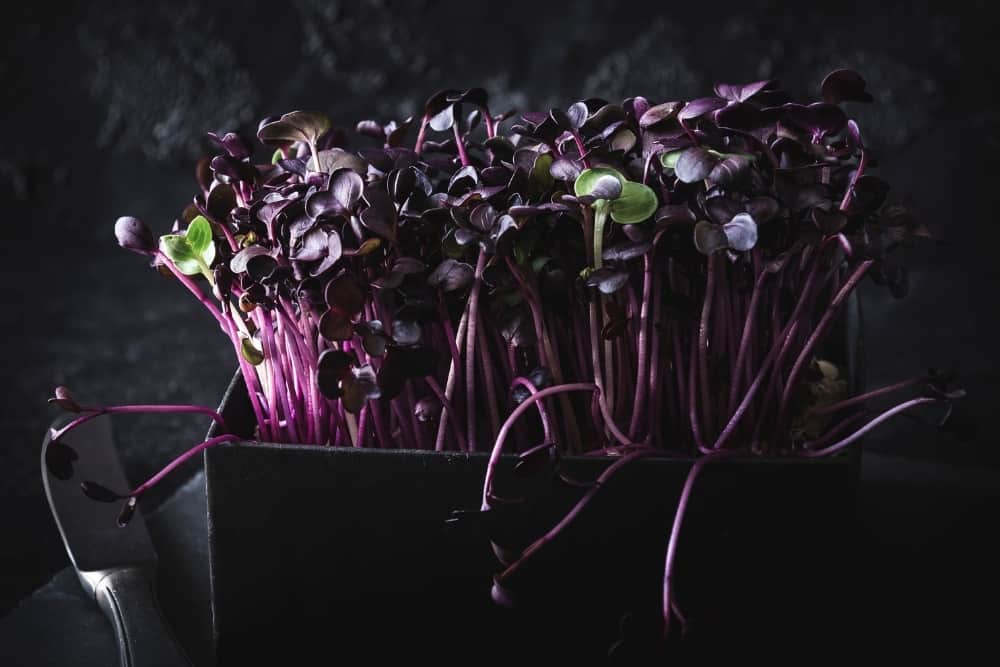
Health benefits of peppercress include:
- Anti-inflammatory
- Treats anemia
- Prevents heart disease
- Beneficial to breastfeeding mothers
- Prevents osteoporosis
Flavor Profile
Peppercress, as the name suggests, has a peppery and tangy spice that can be compared to horseradish or mustard. It is also sometimes compared to watercress, but peppercress is said to have a more “assertive” flavor.
Nutrition
| Peppercress (per 25 g)/ % of Recommended Daily Intake | |
| Vitamin C | 14.3 mg / 36% |
| Vitamin E | 10.3 mg / 343% for women, 257% for men |
| Vitamin K1 | 60 μg / 50% |
| Beta-Carotene | 2.7 mg / 32% for women, 25% for men ** |
| Lutein/Zeaxanthin | 1.9 mg / ** |
Best Application
Beet microgreens are best suited for raw applications; they are delicate, and the flavor and texture will not hold up when exposed to high temperatures.
Recommended applications for peppercress include:
- Use in salads, sandwiches, or soups.
- Complement and cut the richness of red meat and creamy cheeses
- Addition to seafood, particularly ceviche
- Mix into sauces such as pesto, chimichurri, aioli, vinaigrettes, and marinades
- Sprinkle on top of poached eggs, or place poached eggs on a bed of peppercress
Growing
Peppercress seeds are mucilaginous; they will take in water and form a mucus membrane around their hulls. Because of this, they require much less water than other microgreens.
- Spray the seeds and the growing medium lightly; too much water can cause the seeds not to germinate.
- Spread the seeds evenly over the growing medium
- Cover for about 4 or 5 days.
- While the seeds are covered from the light, mist the seeds frequently but with only a slight amount of water.
- When the seeds have germinated, move them to a sunny location.
- Continue to water minimally. Too much water can drown out the fragile root system.
Harvesting
Peppercress microgreens are ready to be harvested 8 to 12 days after germination, or when they are about 2 inches tall. As with other microgreens, peppercress needs to be as dry as possible when harvested.
If they are damp to the touch, dry gently between two paper towels. Excess moisture in storage can lead to molding and rot. When dry, store in a sealed container in the refrigerator.
(Source: healthbenefitstimes.com; urbancultivator.net; epicgardening.com)
Conclusion
Taste is highly subjective. There are so many varieties of the healthiest microgreens to eat available with a wide range of tastes, including:
- Sweet
- Spicy
- Earthy
- Nutty
- Sour
- Citrusy
- Peppery
- Bitter
While the list above is considered to be some of the tastiest and healthiest microgreens to eat, they’re just a start. Get out there and taste some microgreens and find out what you like.

